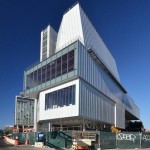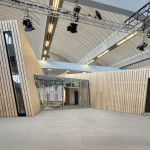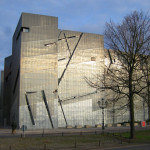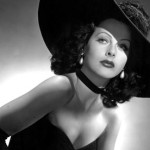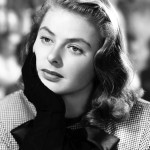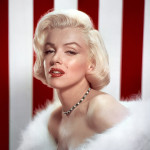 On Thursday, our conversations began with a review of our experience of the Whitney museum. How did the new buidling itself interact with its environment? Was it a sign of gentrification, of “uptown” taking over “downtown,” a phenomenon all to real to lower and middle socio-economic classes living in New York City? Or was this the museum returning to its “roots” in Gertrude Vanderbilt Whitney’s downtown studio and the disenfranchised young American artists that she acknowledged and helped? Along a more aesthetic and less sociological track, was the building itself part of the exhibit with its wide spaces, open lighting, inclusion of the river, the meatpacking district, and the larger landscape of New York?
On Thursday, our conversations began with a review of our experience of the Whitney museum. How did the new buidling itself interact with its environment? Was it a sign of gentrification, of “uptown” taking over “downtown,” a phenomenon all to real to lower and middle socio-economic classes living in New York City? Or was this the museum returning to its “roots” in Gertrude Vanderbilt Whitney’s downtown studio and the disenfranchised young American artists that she acknowledged and helped? Along a more aesthetic and less sociological track, was the building itself part of the exhibit with its wide spaces, open lighting, inclusion of the river, the meatpacking district, and the larger landscape of New York?
We then served to whether art has a purpose or whether its purpose is no other than to entice you to look/engage with it again. Architecture came up–let’s recall the 18th century division of fine from practical arts. And then we flowed iinto:
sports stadiums: older vs the 70s which are now crumbling
Superdome
New Orleans and Katrine and the ongoing attempts to reclaim the city and honor what the inhabitants endured and overcame
a jazz funeral for the sorrows: reclaiming spaces through performances
Can there be beauty in sorrow?
-the new WTC building (beautiful but sorrowful only in its evocation of memory) and the fountains below (directly pointing to sorrow)
-sorrow in music (apparently not a topic of interest so we passed quickly on) but for me offering so many rich examples of the highest instantiation of beauty, death, loss.)
-The Jewish Museum in Berlin as instantiating in visitors a sense of being off kilter, reminding all (even though who do not know) of what loss was suffered. {\Susan spoke eloquently about her own experiences of oppression and anguish in simply visiting the building itself. Brava.)
Compate the image of the new Whitney Museum in New York (celebrating American freedom and innovation, and power) with the Jewish Memorial Museum in Berlin:
- Whitney
- Jewish Museum in Berlin
- Jewish Museum in Berlin
And then we vieered into ugliness again. Movies, modern artworks as in a constant dialogue with other works (no isolated meaning–only meaning with others and in juxtaposition with/opposition to others)
Are there some artiworks which are linked to too ephemeral a message to survive? Ah, think of all the works reveered in the past to which we simply shrug and move on now.
In the afternoon we attended to the idea of beauty in fashion. Rafa introduced the idea of haute couture as artwork in both its approximation of beauty but also in its uniqueness and in an odd sense, non-apparel nature. Mary introduced us to spray on fabric. We discussed the rare and special pieces made on demand vs. pret a porter and then fashion for the masses (Target designers.) How does fashion move through art to tool and down through socio-economic levels? We moved on to the museum gift shop phenomena (no such things existed way back when I first went to the Met as a girl), and two documentaries were mentioned:
Exit Through the Gift Shop and
Helvetica
Brian asked why we call cars and boats “she?” While our collective reaction was to go straight to the sexist claims of ownership, domination, and ‘love,’ David suggested that language might be the real root. Since many languages have gendered nouns, we explored the nature of the gender of words, including neuter which David said was actually a latter development in the Greco-Roman language group. He offered us a tantalizing tour of the moods and voices of ancient Greek, including a “middle voice.” One has to wonder if the world would be parsed quite differently if we have additional “voices” in which to articulate our selves and our relationships to the world. Swedish has invented (or reclaimed?) a new pronoun to avoid the male/female dichotomy [hen] and Eric shared that in his college he asks students if they wish to ge called “Zee” to avoid “Mr.,” “Miss/Mrs./Ms” dichotomy.
 In the magical way our group has of crafting conversation in multi-layers and directions, we then parsed the differences or at least tensions between cosmetic plastic surgery and tattoos and body modifications for gender identity Why do we judge negatively the older women who gets the face lift but applaud Caitlyn Jenner for her surgery? What about the very concept of deformity and how societies define and react to it? Eric offered an insightful observation, the gist of which I will most likely lose here–on a theory of beauty which articulates a norm but with a radical mutation in ways which surprise, engage, and ultimately redefine the very norm itself.
In the magical way our group has of crafting conversation in multi-layers and directions, we then parsed the differences or at least tensions between cosmetic plastic surgery and tattoos and body modifications for gender identity Why do we judge negatively the older women who gets the face lift but applaud Caitlyn Jenner for her surgery? What about the very concept of deformity and how societies define and react to it? Eric offered an insightful observation, the gist of which I will most likely lose here–on a theory of beauty which articulates a norm but with a radical mutation in ways which surprise, engage, and ultimately redefine the very norm itself.
We ended the day with David referencing a short film, The Critic. I was not familiar but was delighted to learn that it was the inestimable Mel Brooks. Enough said.
And for our musical interlude today on death, suffering, and beauty… umm, what to choose? Where to start? Well, if anyone were to read this post (most likely not, that is OK- I do not mind speaking to the silence), add your own example of exquisite music that is both beautiful, and also achingly sad, even tragic. I heard this piece years ago on the radio and I had no idea what the soprano was saying (in Polish) nor was I at all familiar with the composer (Gorecki) or the name of the piece. But I recognized death, love, and transcendence in it.

